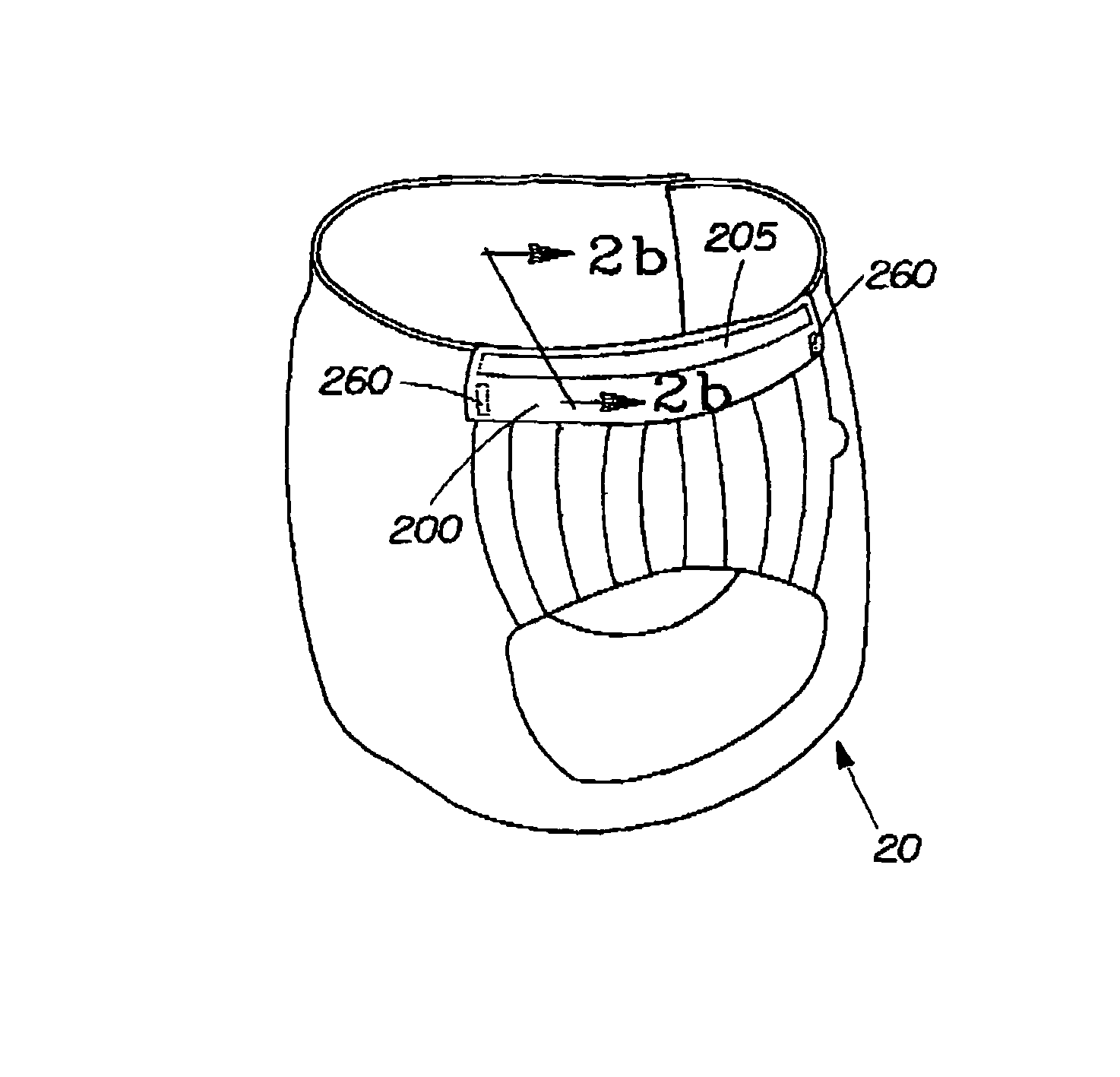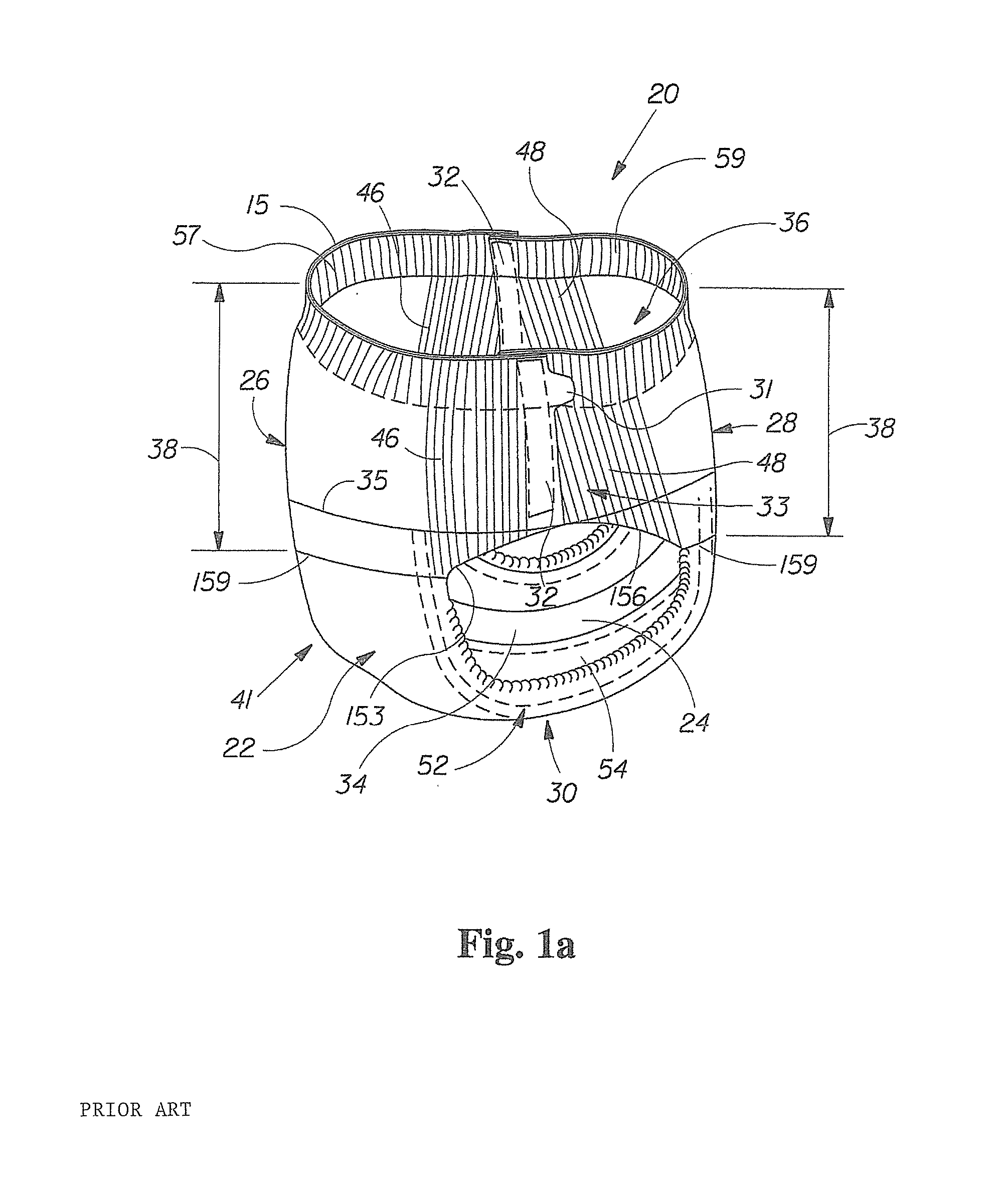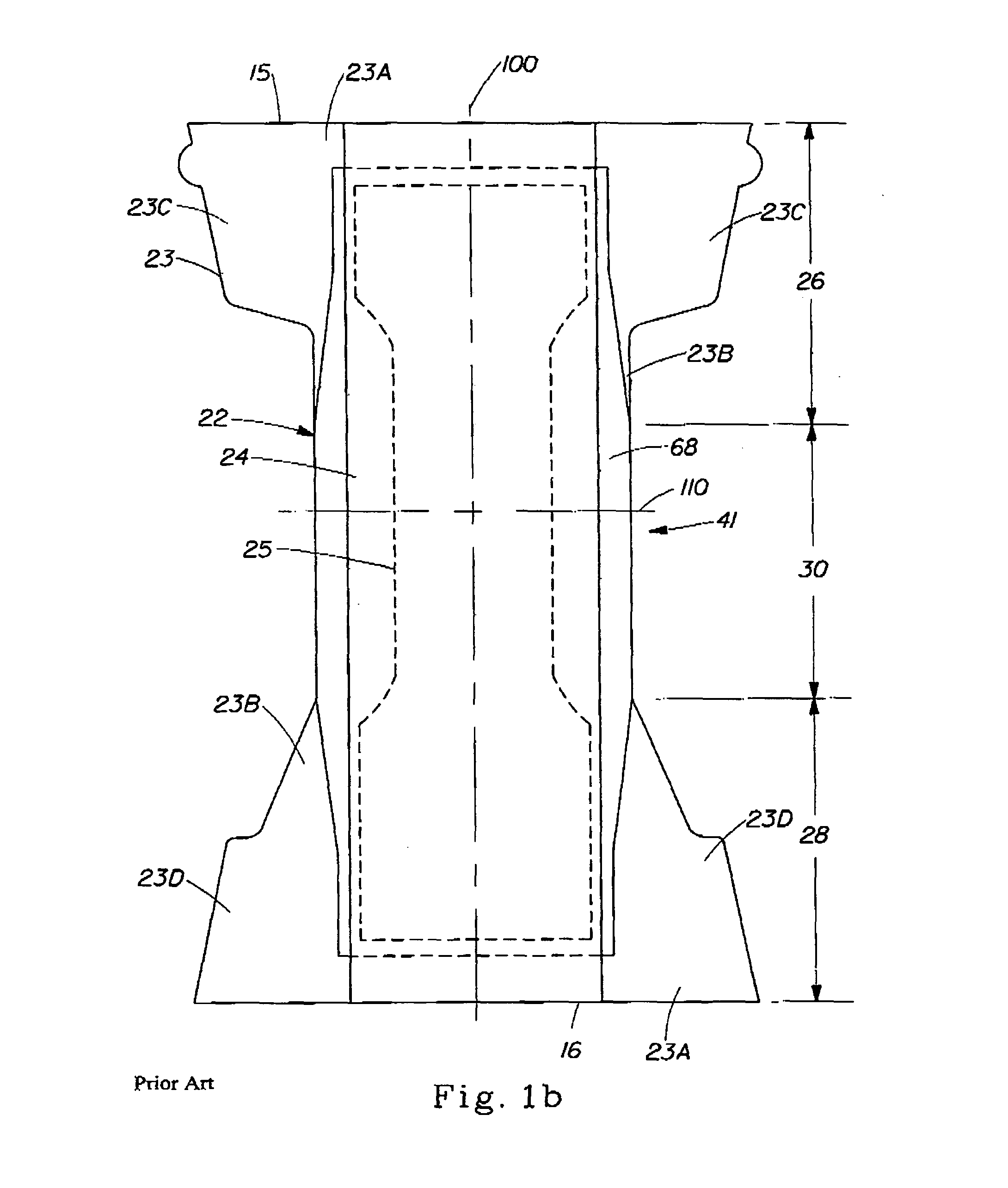Absorbent article comprising a flap handle that aids in the application of said absorbent article
a technology of absorbent articles and flap handles, which is applied in the field of disposable absorbent articles, can solve the problems of failure of pull-on, inability to fully expand the pull-on prior to application, and inability to fully expand the pull-on before application,
- Summary
- Abstract
- Description
- Claims
- Application Information
AI Technical Summary
Benefits of technology
Problems solved by technology
Method used
Image
Examples
second embodiment
[0075]FIG. 3a shows a perspective view of a handle as a tab 300 extending from the belt zone. The tab 300 is, generally, a stratum disposed adjacent to the chassis 41 or sidewall 33 such that, during application or removal, the tab 300 is engaged by pinching the tab 300 between the fingers of the wearer or caregiver. In a preferred embodiment of FIG. 3a, the tab 300 is a unitary tongue of the material comprising the belt zone extending from the waist edge 15. The tab 300 extend such that the one dimension of the tab 300 parallels the waist edge 15. The tab 300 is shown as being laterally defined by the sidewall; however, the location and dimensions of the tab 300 are limited only by the wearer's ability to reach and engage the tab 300.
[0076]While FIG. 3a shows the preferred location of the tab 300 as extending from the waist edge 15, the tab 300 may be located anywhere in the diaper such that the wearer can engage the tab 300 while applying the diaper. The tab 300 may be positioned ...
third embodiment
[0080]FIG. 4a shows a perspective view of the handle as a ridge 400 protruding from the belt zone of the pull-on diaper 20. The ridge 400 is, generally, a protrusion extending from at least the garment-facing surface of the pull-on 20 such that the ridge provides increased caliper which may be engaged by the wearer's or caregiver's fingers. In a preferred embodiment, the ridge 400 is proximate to the waist edge 15. The ridge 400 has a minimum effective cross-dimension such that the ridge is a grippable protuberance for the wearer. The maximum effective cross-dimension of the ridge 400 is limited only such that the article maintains a comfortable fit and the ridge 400 does not substantially interfere with the application of other outer garments (i.e., prohibit self-application of pants, gown, etc.). Preferably, the ridge 400 has an effective cross-dimension of about 2 mm to about 15 mm. Most preferably, the ridge 400 has an effective cross-dimension of about 5 mm to about 8 mm. The e...
PUM
 Login to View More
Login to View More Abstract
Description
Claims
Application Information
 Login to View More
Login to View More - R&D
- Intellectual Property
- Life Sciences
- Materials
- Tech Scout
- Unparalleled Data Quality
- Higher Quality Content
- 60% Fewer Hallucinations
Browse by: Latest US Patents, China's latest patents, Technical Efficacy Thesaurus, Application Domain, Technology Topic, Popular Technical Reports.
© 2025 PatSnap. All rights reserved.Legal|Privacy policy|Modern Slavery Act Transparency Statement|Sitemap|About US| Contact US: help@patsnap.com



